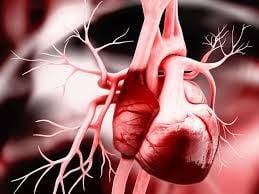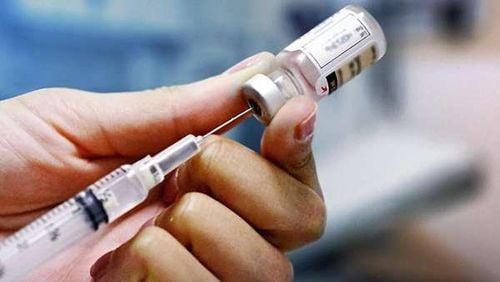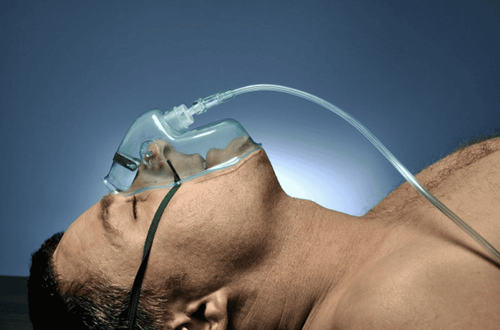This is an automatically translated article.
The article was professionally consulted by Specialist Doctor I Nguyen Duc Thong - Anesthesiologist - General Surgery Department - Vinmec Danang International Hospital.Surgery is always an indispensable treatment operation, but there is a potential risk of complications. To minimize unnecessary complications, pre-anesthesia examination before surgery is the first thing for all anesthesia and resuscitation activities to minimize and handle possible complications during surgery. surgery
1. Purpose of pre-anesthesia examination before surgery:
Pre-anesthesia examination is essential and legal before all surgeries. Therefore, the role of the pre-anesthesiology doctor is very important because the patient's psychology in this period is extremely stressful, they need to both learn the disease, plan, but also do the thinking work for the patient to understand and believe. thoughts and reduce anxiety. The purpose of pre-operative anesthesia is to:Assess the patient's condition before surgery Detect comorbid conditions as well as plan the survey and treatment before, during and after surgery Know the medical history family Understand the surgical situation and the surgical operations that will occur Recommend additional tests if necessary Agree with the surgeon the optimal timing and method of treatment, jointly identify the risks surgery Choose the appropriate method of anesthesia: can be sedation or sedation

2. Procedure for pre-anesthesia examination:
Pre-surgery pre-anesthesia examination should be done carefully and seriously to minimize unwanted risks during surgery. Pre-anesthesia examination can be divided into 3 steps as follows:Step 1: History-history
It is necessary to understand the patient's overall medical history, the tests performed and the surgical diagnosis. It is necessary to record preoperative symptoms of the main disease for post-operative assessment.
Patient's location needs to exploit factors such as occupation, smoking, alcoholism, general condition and BMI. In particular, it is necessary to record a history of allergies, especially drug allergies and allergies related to drugs used in surgery such as:
Penicillin, cephalosporin, sulfonamide groups often cause allergies Patients allergic to soy or eggs do not Using propofol Skin reaction to iodine avoid using iodine-containing drugs. History of reaction to anesthetic gas in patient or loved one should pay attention to the possibility of malignant high fever during surgery, gas-induced hepatitis, muscle paralysis due to enzyme deficiency. metabolism

It is necessary to record the drugs being treated for the main disease and the comorbidities to determine whether to stop or continue using the drug in the pre-operative period. Surgical history, history of anesthesia and family history should also be carefully taken.
Step 2: Physical examination
Thorough examination of the patient, paying particular attention to airway, cardiovascular, respiratory, Circulatory, neurological, spinal status and vital signs recorded. The pre-anesthesia examination also has a special examination that is different from the usual examination, which is to examine factors affecting the ability to ventilate and intubate:
Condition of teeth, chin, beard, flexion of the neck, distance chin - thyroid, neck retraction scars, temporomandibular joint mobility Malampatti criteria include: mouth opening, tongue condition, palate. The numbed area has scars, deformities, infections, kyphosis. Nerve damage affects the function of areas such as eyes that are not closed tightly, mouth distorted, difficulty swallowing, choking, decreased cough reflex, weakness,... Pre-anesthesia examination helps anesthesiologists have a comprehensive view. about the patient, and at the same time assess the airway condition, difficult airway prognosis, spinal anesthesia ability to plan the most perfect anesthesia - anesthesia for the patient.
Step 3: subclinical
The patient may have had previous tests, so it is necessary to read the available test results to find out abnormalities and take appropriate measures and recommend additional treatment. add other necessary tests for the surgical process.
3. Assess the patient's condition after pre-anesthesia examination:

ASA1: the patient is in good health ASA2 : the patient has a disease but does not affect the patient's daily activities, which can be mentioned as primary hypertension, anemia, obesity, old age, chronic bronchitis ASA3: the patient has a disease affecting the living activities such as primary hypertension with little response to treatment, diabetes with vascular complications ASA4: patients with serious life-threatening diseases such as aortic aneurysm, congestive heart failure, severe bronchial asthma, ASA5 heart valve disease: the patient's condition is too severe, dying is unlikely to live for 24 hours with or without surgery. In addition, anesthesiologists also use Goldman's scale to assess cardiovascular risk factors:
-Class I: 0 to 5 points: 1% cardiovascular complications
-Class II: 6 to 12 points: 7% cardiovascular complications.
-Class III: 13 to 25 points: 14% of cardiovascular complications
-Class IV: 26 to 53 points: 78% of cardiovascular complications.
Pre-anesthesia examination is a routine examination at Vinmec before any surgery or examination takes place. Accordingly, the pre-anesthesia and anesthetic examination process at Vinmec is carried out methodically and in accordance with the standard procedures by a team of highly skilled doctors and nurses, modern machinery system, thus giving accurate results. contribute significantly to the identification of the disease and the stage of the disease, thereby guiding the treatment, minimizing complications during anesthesia, and ensuring the success of the surgery.
Doctor Duc Thong has 14 years of experience in the field of Anesthesia. Especially, with 12 years working at the Department of Anesthesiology and Resuscitation at C Da Nang Hospital, Dr. Thong has extensive experience in the field of Anesthesia and resuscitation for elderly patients with many comorbidities and serious illnesses. surgery; helping many heavy and complicated surgeries to be successful. Currently, he is an anesthesiologist at the Department of General Surgery - Vinmec Da Nang International General Hospital.
If you have a need for consultation and examination at Vinmec Hospitals under the nationwide health system, please book an appointment on the website for service.
Please dial HOTLINE for more information or register for an appointment HERE. Download MyVinmec app to make appointments faster and to manage your bookings easily.














